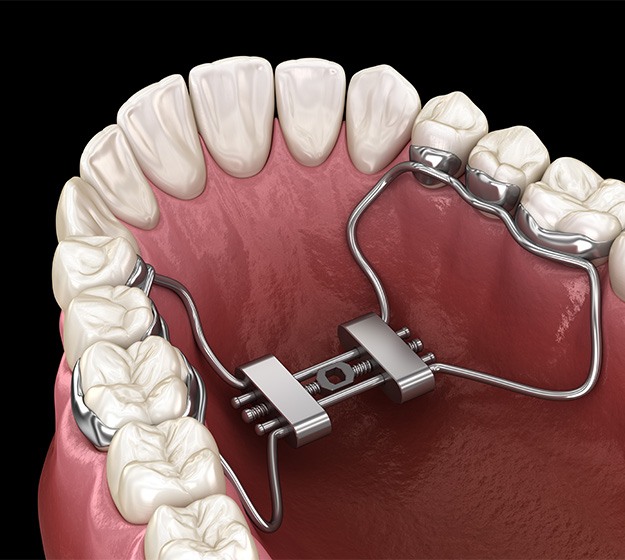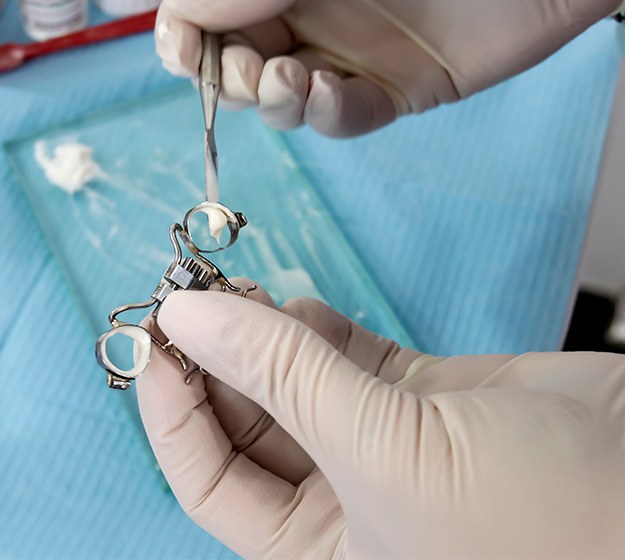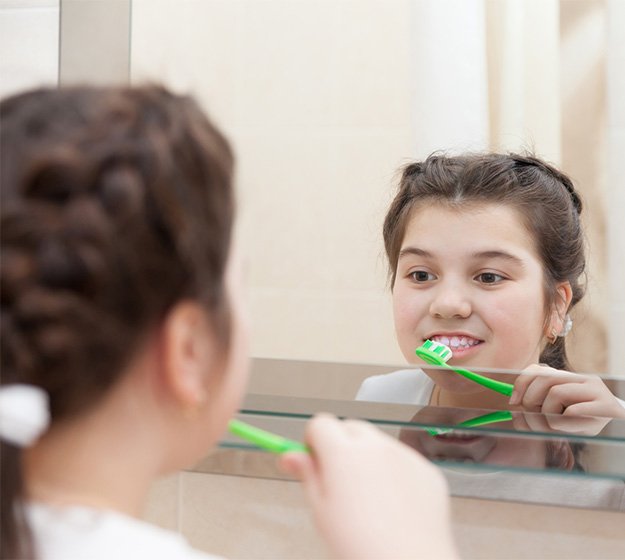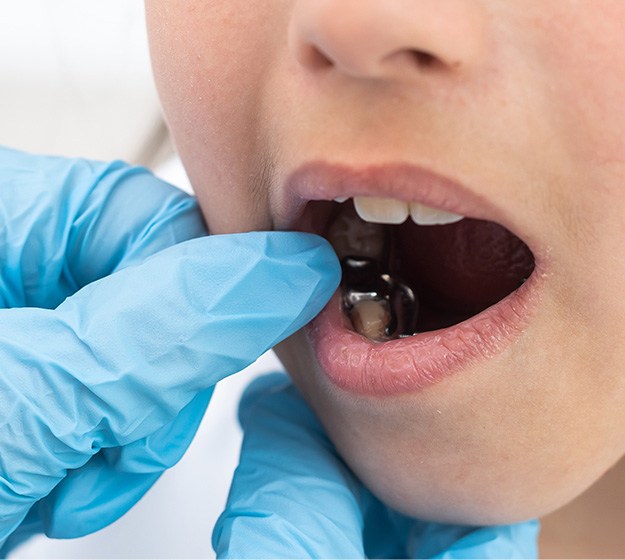Palate Expanders – Plano, TX
Creating Space for Shifting Teeth
At Willow Bend Orthodontics, Dr. Jones and our team see patients with all kinds of smiles. Children who are still waiting for permanent teeth to erupt as well as those who are living with crooked, misaligned teeth may not realize that a narrow hard palate may be to blame. When examining a child’s mouth, Dr. Jones may recommend palate expanders in Plano to fix this problem. By installing a metal bar that stretches across the roof of the mouth, it can create essential space so that teeth can erupt or shift into alignment with greater ease. Call us today if you think your child could benefit from a consultation with our team.
What is a Palate Expander?

A palate expander is a unique device that is commonly used in patients who are preparing for orthodontic treatment. It can also be used on young children who have impacted teeth that have yet to erupt. When the hard palate is too narrow, it can make tooth eruption much more difficult.
By installing a palate expander, the device can help to create space so that impacted teeth will have room to erupt, reduce overcrowding, make it easier for a child to breathe, and treat a crossbite.
How Does a Palate Expander Work?

Custom-made to fit each patient’s upper part of the mouth, its metal bar extends across the palate and attaches to teeth on either side. Designed to place just enough pressure on the jaw to increase space in the upper part of the mouth, it is expanded during regular follow-up appointments using what is known as a “key.” Some patients will be instructed on how to do this at home, but over time, it will work to shift the jaw.
Depending on how long a patient must wear the expander, it can cause gaps to form between existing teeth, which will then be treated using dental braces.
What is the Appropriate Way to Clean a Palate Expander?

Palate expanders will accumulate saliva, bacteria, and food particles throughout the day, so patients must make sure to keep theirs clean during treatment. This requires brushing it with a toothbrush and toothpaste each time an individual takes care of their teeth and gums. Also, a water irrigator can help push out any remaining plaque and debris. Finally, an antimicrobial mouthwash can help to flush out anything left behind that brushing or flossing didn’t catch.
Will a Palate Expander Hurt?

It’s no secret that wearing a palate expander can cause discomfort. Because this device is placed over teeth and designed to place pressure on the jaw, it will create an uncomfortable experience. Taking an over-the-counter pain reliever can help with this, but patients might find that avoiding hard, sticky, or crunchy foods helps to keep additional pressure from being placed on teeth. This discomfort should dissipate over time, but it can be helpful if the patient sticks to softer foods while wearing one.
Palate Expanders FAQs
Can Palate Expanders Be Used on Teens and Adults?
Palatal expanders are most frequently recommended for children because their developing bones are more receptive to orthopedic intervention. However, if you are a teenager or an adult, you might still benefit from palatal expansion. The process may take longer and demand a more tailored approach because the flexibility of the palate tends to diminish as you grow older. Surgical intervention might even be required for palate expansion to be effective.
Before recommending palate expanders in Plano for anyone, our team thoroughly assesses each case with the goal of providing care that is both effective and conservative.
Are There Any Eating Restrictions with a Palate Expander?
If your child receives a palatal expander, it may be necessary to make some thoughtful dietary adjustments to protect the appliance and promote successful treatment outcomes. Certain foods — especially those that are hard, sticky, or chewy — pose a risk to the expander by loosening or damaging its components, which could delay progress or require unplanned repairs. To prevent these issues, we suggest focusing on soft foods that do not require excessive chewing or contain sticky residues.
Our team will provide a comprehensive list of foods to avoid while wearing a palate expander and will guide you and your child in making wise choices that ensure good nutrition and comfort. Examples of foods to avoid include caramel, chewing gum, hard candies, popcorn, nuts, and tough meats. Instead, opt for items like yogurt, pasta, eggs, steamed vegetables, bananas, and tender chicken.
(Of course, if your child is using a removable expander instead of a fixed one, there will be fewer dietary restrictions as long as the expander gets taken out of the mouth at mealtimes.)
What Should Happen After Treatment with a Palate Expander?
Once the palatal expander has accomplished its intended purpose, we will carefully remove the appliance and evaluate the improvements in your child’s bite and the alignment of their upper jaw. Many patients notice a significant enhancement in both function and appearance as a result of this phase of orthodontic care. However, the process does not end with the removal of the expander. A retainer is often necessary to allow time for the upper jaw to solidify in its new position.
After the use of a palate expander, the next step in orthodontic care frequently involves the use of braces or clear aligners to further refine the position of the teeth. We will schedule regular follow-up visits to assess your child’s progress, answer any questions, and address ongoing needs, all with the goal of optimizing your child’s treatment outcome.
What Should I Do if My Child’s Expander Breaks?
If your child’s palatal expander breaks, your first action should be to contact our office immediately. Do not attempt to adjust or repair the appliance on your own, since improper handling can cause additional damage or discomfort and may compromise the treatment’s effectiveness. Until you can visit our office, instruct your child to avoid eating hard or sticky foods and refrain from touching the expander with their fingers, pencils, or other objects.
We treat broken appliances with urgency and will arrange for your child to be seen as quickly as possible. During your appointment, we will carefully assess the extent of the damage and determine whether the expander can be repaired or if replacement is necessary.

